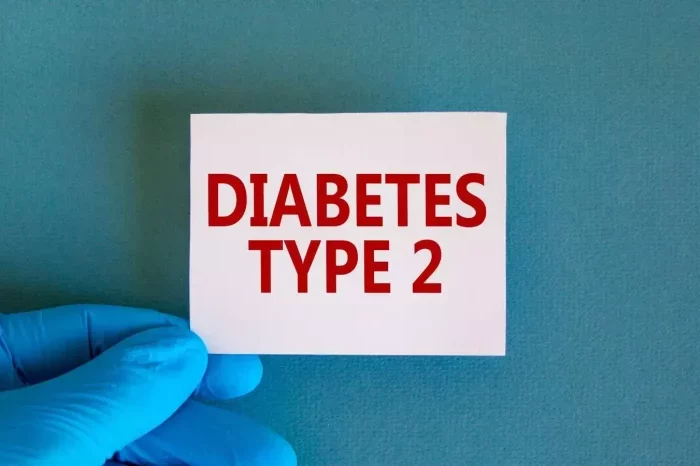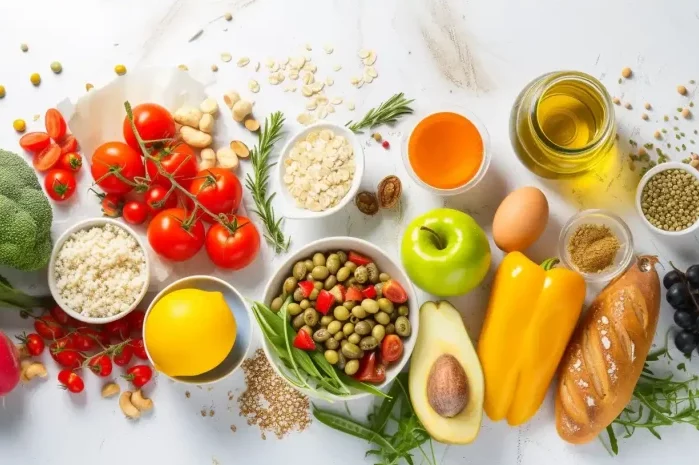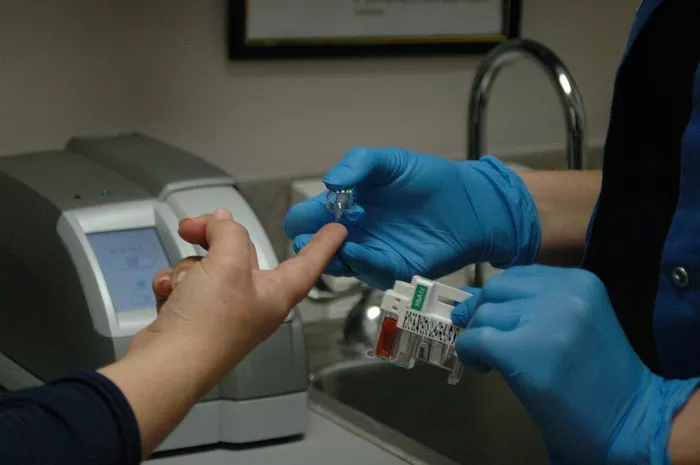Managing Type 1 and Type 2 diabetes involves not only proper medication and regular blood sugar monitoring but also dietary adjustments. One of the most significant areas for improvement in a diabetic’s diet is the intake of fruits. While fruits are an essential source of vitamins, minerals, fiber, and antioxidants, their impact on blood glucose levels can vary greatly depending on the type of fruit, the quantity consumed, and an individual’s unique response to certain foods.
A1C is a blood test that reflects average blood sugar levels over a 2-3 month period. Elevated A1C levels are a key indicator of poorly managed diabetes and can increase the risk of complications such as nerve damage, kidney disease, and cardiovascular problems. Thus, lowering A1C levels through diet, exercise, and medications is crucial for long-term health.
In this article, we will explore the best fruits to lower A1C, focusing on those that have a minimal effect on blood sugar spikes while providing essential nutrients that support overall metabolic health.
What is A1C and Why Is It Important?
A1C, also known as glycated hemoglobin, measures the percentage of hemoglobin in the blood that is coated with sugar. This is an important indicator because it reflects how well blood sugar has been controlled over the past few months. For diabetics, maintaining an A1C level below 7% is generally the goal to reduce the risk of diabetes-related complications.
When blood glucose levels are consistently high, the excess sugar attaches to hemoglobin, forming glycated hemoglobin. A higher A1C suggests poor blood sugar control, while a lower A1C indicates better management of diabetes.
How Does Fruit Affect A1C Levels?
The impact of fruit on A1C largely depends on its glycemic index (GI), a scale that measures how quickly foods raise blood sugar. Fruits with a high GI tend to cause a rapid increase in blood sugar levels, while those with a low GI are absorbed more slowly, providing a gradual rise in glucose.
For people with diabetes, the glycemic load (GL) of a food is also important. The GL takes into account the portion size of the food, offering a more comprehensive picture of how the food will impact blood sugar levels. Fruits that have a low to moderate glycemic index and load are generally considered beneficial for controlling A1C levels.
Additionally, fruits rich in fiber, antioxidants, and vitamins can help reduce inflammation, improve insulin sensitivity, and provide overall health benefits that support blood sugar regulation.
The Best Fruits to Lower A1C
1. Berries: Blueberries, Strawberries, Blackberries, and Raspberries
Berries are among the best fruits for diabetics looking to lower their A1C. They are low in glycemic index, rich in fiber, and packed with antioxidants such as anthocyanins, which are believed to help reduce inflammation and improve insulin sensitivity.
Glycemic Index (GI): 40–53 (low)
Glycemic Load (GL): 3–5 (low)
Why They Help Lower A1C: The high fiber content of berries slows the digestion of carbohydrates, helping to prevent rapid spikes in blood sugar levels. The antioxidants present in berries also support the reduction of oxidative stress, a factor that contributes to insulin resistance in diabetics.
Studies have shown that regular consumption of berries, particularly blueberries, may improve glycemic control. Blueberries, in particular, have been associated with increased insulin sensitivity, which is essential for lowering A1C.
2. Apples
Apples are another great option for diabetics aiming to lower their A1C. They are rich in fiber, especially pectin, which is a soluble fiber that helps regulate blood sugar. Apples also provide a substantial amount of vitamin C, which has antioxidant properties that contribute to overall health.
Glycemic Index (GI): 36 (low)
Glycemic Load (GL): 6 (low to moderate)
Why They Help Lower A1C: The fiber in apples promotes slower digestion and absorption of sugars, which helps maintain steady blood glucose levels. The pectin in apples also helps in the management of insulin sensitivity, a key factor in controlling A1C levels.
Furthermore, the antioxidants in apples may help combat the oxidative stress associated with diabetes, potentially leading to better overall glycemic control.
3. Pears
Pears are another fruit that offer substantial benefits for those managing diabetes. Like apples, pears are high in fiber, which contributes to better blood sugar control. They also have a low glycemic index, making them a good option for individuals with diabetes.
Glycemic Index (GI): 38 (low)
Glycemic Load (GL): 4 (low)
Why They Help Lower A1C: The high fiber content of pears slows glucose absorption, helping to prevent sudden spikes in blood sugar levels. Pears are also rich in vitamin C and potassium, which promote heart health, an important consideration for diabetics. Their low glycemic index helps prevent sharp increases in A1C levels, making them an excellent choice for blood sugar management.
4. Cherries
Cherries, particularly tart cherries, have been shown to have beneficial effects on blood sugar levels and insulin sensitivity. They are rich in anthocyanins, which are compounds that help reduce inflammation and oxidative stress, both of which are associated with insulin resistance.
Glycemic Index (GI): 22 (low)
Glycemic Load (GL): 4 (low)
Why They Help Lower A1C: Cherries are not only low in glycemic index but also rich in polyphenols, which have been shown to have anti-inflammatory and antioxidant effects. This can improve insulin sensitivity, helping the body process glucose more effectively and lowering the A1C over time.
Regular consumption of cherries can also provide protection against oxidative damage, which can worsen insulin resistance and make blood sugar management more difficult.
5. Grapefruit
Grapefruit is a citrus fruit known for its tangy flavor and its potential to support diabetes management. It is low in glycemic index and high in vitamin C and antioxidants, which are beneficial for overall health.
Glycemic Index (GI): 25 (low)
Glycemic Load (GL): 3 (low)
Why They Help Lower A1C: Grapefruit has a low glycemic index, meaning it has a minimal impact on blood sugar levels. It also contains flavonoids, particularly naringenin, which have been shown to improve insulin sensitivity. Studies have suggested that consuming grapefruit may help reduce A1C levels, particularly in individuals with Type 2 diabetes.
Additionally, grapefruit is low in calories and has high water content, making it a great hydrating snack option that can promote weight loss—a key component in improving insulin resistance and managing blood sugar.
6. Kiwi
Kiwi is a nutrient-dense fruit that is rich in fiber, vitamin C, and antioxidants. It has a relatively low glycemic index and is known for its digestive benefits, which may help control blood sugar levels.
Glycemic Index (GI): 52 (low)
Glycemic Load (GL): 4 (low)
Why They Help Lower A1C: Kiwi is high in fiber, which helps regulate blood sugar by slowing down the digestion of carbohydrates. It also contains compounds that can help reduce oxidative stress, which plays a significant role in insulin resistance. Furthermore, the vitamin C in kiwi can help reduce inflammation, another factor that can contribute to insulin resistance in diabetics.
7. Peaches
Peaches are a sweet and juicy fruit that are low in glycemic index and rich in vitamins, minerals, and antioxidants. They offer a wide range of health benefits, including potential improvements in blood sugar control.
Glycemic Index (GI): 42 (low)
Glycemic Load (GL): 4 (low)
Why They Help Lower A1C: Peaches are rich in both soluble and insoluble fiber, which help regulate glucose levels by slowing digestion. The antioxidants in peaches may also help reduce inflammation and improve insulin sensitivity, both of which are important for lowering A1C.
In addition to their potential blood sugar-lowering benefits, peaches are a good source of potassium, which is essential for heart health, especially in diabetics who are at higher risk for cardiovascular issues.
Fruits to Avoid for Lowering A1C
While many fruits offer benefits for blood sugar control, some are best avoided or consumed in moderation due to their higher glycemic index. These include:
-
Bananas (ripe)
-
Pineapple
-
Mangoes
-
Watermelon
-
Grapes (in large quantities)
These fruits are higher in sugar and have a faster impact on blood glucose levels, which can lead to spikes in A1C if consumed excessively.
Tips for Incorporating Fruit Into a Diabetes-Friendly Diet
To take advantage of the blood sugar-lowering benefits of fruit while managing diabetes effectively, consider these tips:
Moderate Portion Sizes: Even fruits with a low glycemic index can impact blood sugar if consumed in large quantities. Stick to one serving at a time.
Pair with Protein or Healthy Fats: Combining fruit with protein (e.g., Greek yogurt or nuts) or healthy fats (e.g., avocado) can help slow the absorption of sugar into the bloodstream.
Choose Whole Fruit Over Juices: Whole fruits contain fiber, which helps regulate blood sugar, while fruit juices can cause rapid spikes in blood sugar.
Monitor Blood Sugar Regularly: Track how different fruits affect your blood sugar levels. Everyone’s body responds differently to certain foods.
Incorporate a Variety of Fruits: Eating a variety of fruits ensures you get a range of nutrients and antioxidants, which support overall health and may improve insulin sensitivity.
Conclusion
While fruits can be a healthy and delicious part of a diabetic diet, choosing the right types is crucial for managing blood sugar and lowering A1C levels. Berries, apples, pears, cherries, grapefruit, kiwi, and peaches are among the best fruits for diabetes management, as they are low in glycemic index and rich in fiber, vitamins, and antioxidants.
Incorporating these fruits into a balanced diet, while monitoring portion sizes and combining them with other nutrient-dense foods, can help diabetics maintain optimal blood sugar control. With the right approach to fruit consumption, individuals with diabetes can enjoy the nutritional benefits of fruit while working to lower their A1C levels and reduce the risk of complications associated with the condition.
Related topics:
What Foods Increase the Risk of Diabetes























